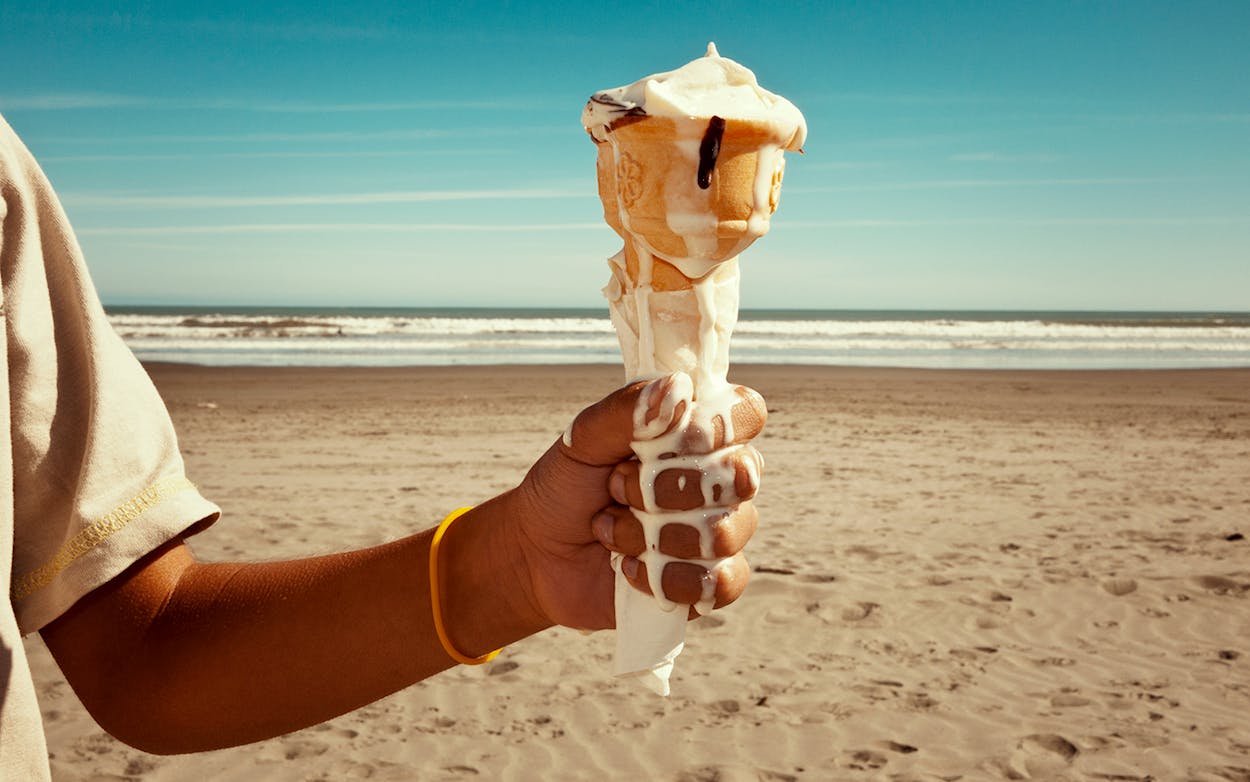I don’t know about you, but I am deeply envious of all those wistful end-of-summer photos that have recently turned up on my Instagram feed. You probably know what I’m talking about: that last sail on the blue waters off the Cape, or the final sunset in the Hamptons, or that last hike in the Tetons or the Rockies, the one requiring long pants and a fleece windbreaker. There were photos of last “cookouts” around the charcoal grill—and no one is sweating. I understand why the arrival of Labor Day is a bittersweet time in other parts of the country, signaling as it does the end of so many carefree days and open-windowed/AC-free nights. But before the bleakness of winter comes fall! The season when vegetable stands transition into pumpkin patches and store windows are stocked with cozy, comforting cashmere.
Unless, of course, you live in Texas. Yes, we have the same post–Labor Day pumpkin spreads and sweater specials, but without the concurrent change in temperature. Instead, there is cognitive climate dissonance. I am still traumatized by the Septembers of my school days, when bulletin boards were decorated with artificial autumn leaves while we sat cooped up in stifling rooms with nothing but rotating floor fans for relief. I was in high school before I attended my first air-conditioned class. It’s a wonder I ever learned to read.
Read the Texanist’s advice to a Montana man worried about dealing with the Houston heat.
Most real Texans—that is, anyone who has lived here more than twelve months—know that September is probably the hottest month of the year, meteorologically and psychologically, because we have already traipsed through June, July, and August like the Dementors in the Harry Potter series. Every year I have the same argument with my husband about whether it cools off in October (him) or November (me), and every year there we are, handing out candy on our porch steps while we slap at mosquitoes and fight for breath in the Calcutta-like humidity of Halloween. The most ambitiously costumed kids look like tiny broiled beasts, their grease-painted faces melting in rivulets before our eyes.
For relief, I stroll through the frigid climes of the Galleria and study this year’s winter fashions—fur-lined boots! Cable-knit sweaters! Puffer coats in royal blue!—and wonder if ever more Houstonians are traveling to places like Greenland or Mongolia, because the chance of wearing any of that stuff around here is as likely as, well, a snowstorm in hell.
Yes, I have noticed a change in the light in these recent mid-September days—it’s yellower and dies closer to 8 p.m. instead of 9—but that’s about it so far. In real life, fall in my hometown of Houston means stocking up on batteries and gallon jugs of water, because the worst of hurricane season usually hits right about now. Hurricane Ike, which tore through Houston in September 2008, left many of us without power for weeks; Harvey hit in late August 2017, but the month after (and many more to come) were spent digging ourselves out of the muck. The only new clothes kids really need for the start of school here are rain boots and waterproof clothing.
This year, in fact, my husband and I finally broke down and made a new seasonal purchase: a generator. The growing strength of storms (see Harvey, above) and the idea that the electrical grid could go down thanks to Russian or high school hackers had begun to fill me with existential dread. When I asked the salesman if business was good, he allowed as how it was very good; in fact, he said, there was a whole new black market in stolen generators, and he recommended putting ours in the corner farthest from the street just to be extra safe. The wait for installation, he said, would be a month or so, sometime in October.
Briefly, we weighed the odds of making a five-figure purchase now or next year. We decided to go for it, because the likelihood of another big storm and even longer and hotter summers seemed pretty good.
In the meantime, I am counting the weeks until November, when the air will finally crisp and a real blue norther will roll in and send us all scurrying to switch our thermostat settings from AC to heat. Maybe after that—in December or January, when the temperature ranges from a high of 70 during the day to a low of 50 at night—I will start posting photos of my husband and me barbecuing in jeans and T-shirts in the backyard and walking dogs who have stopped hiding whenever we suggest a walk.
“Winters here are beautiful!” I will write, already sad about the coming of spring.
- More About:
- Weather








